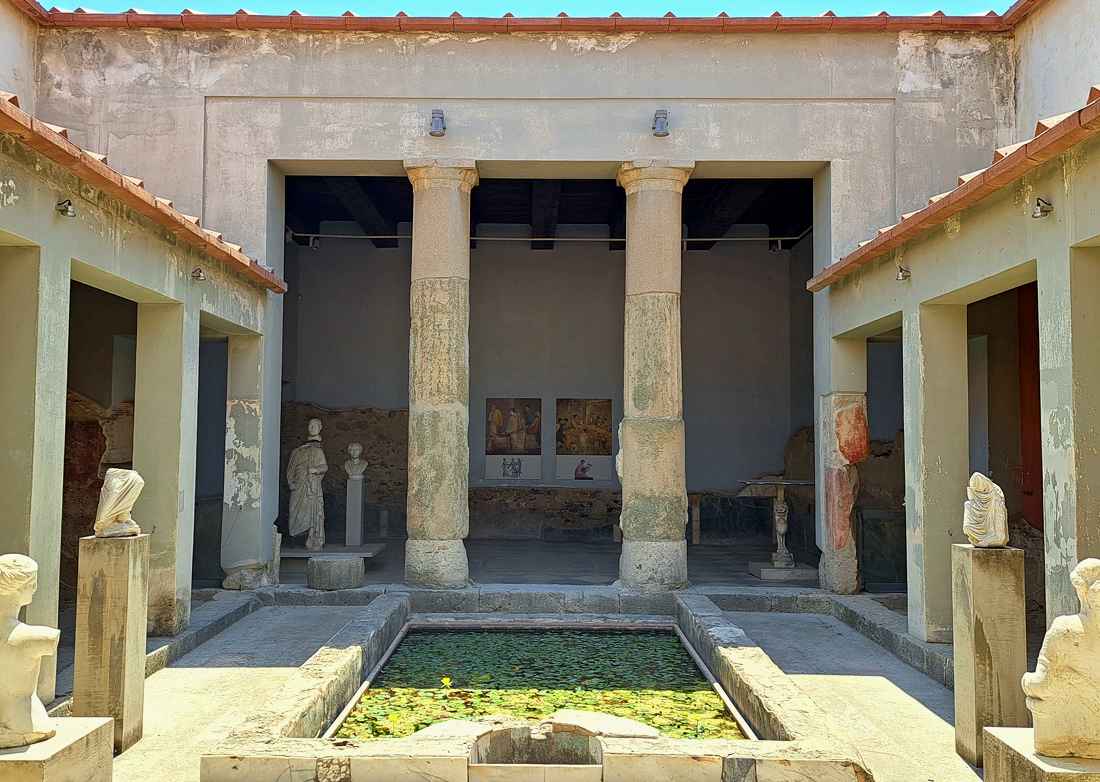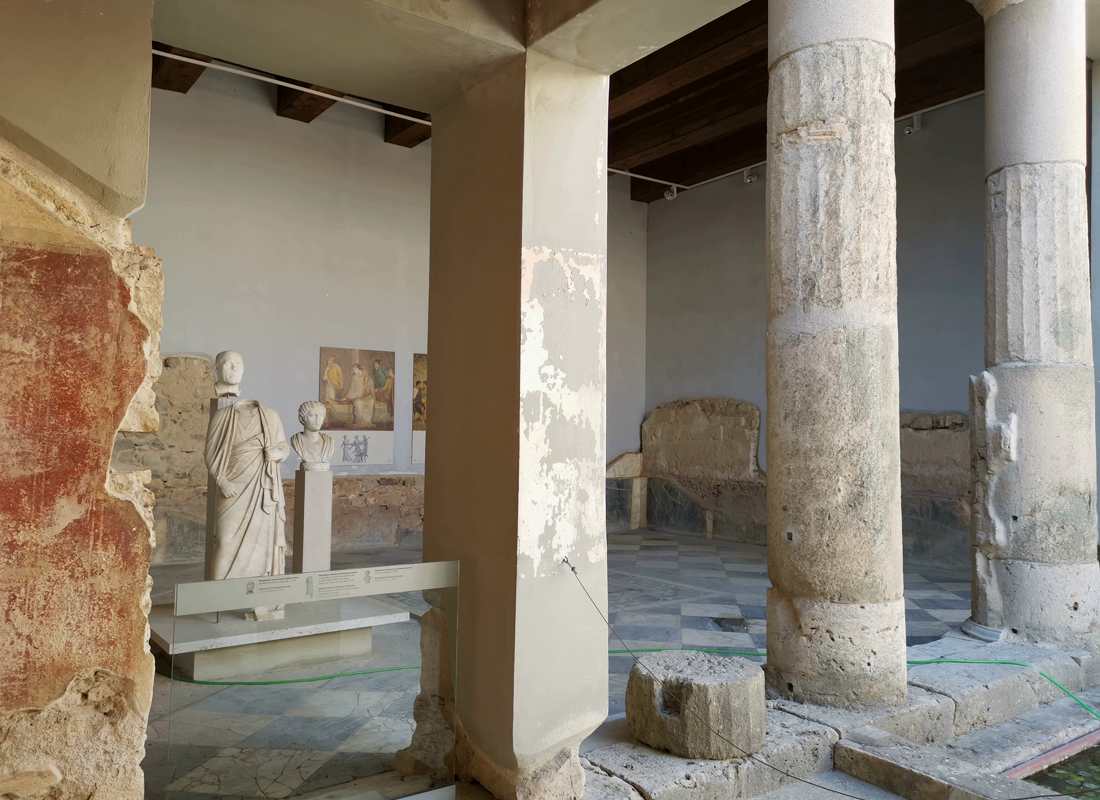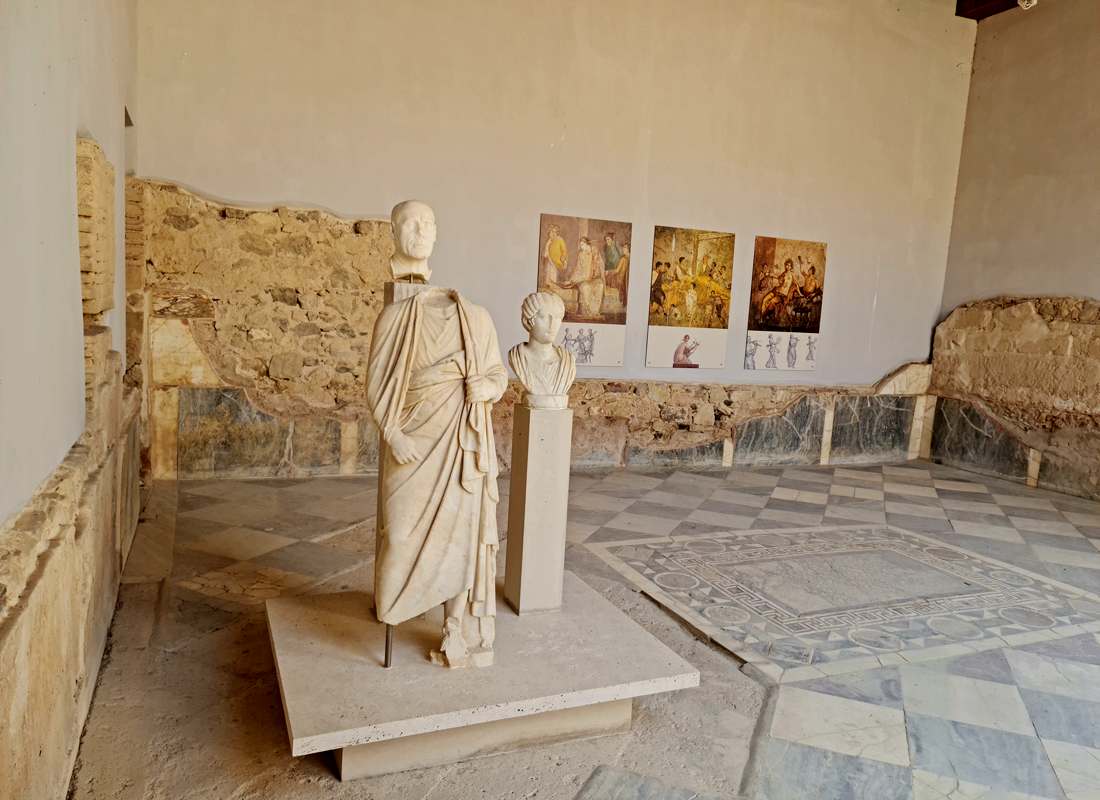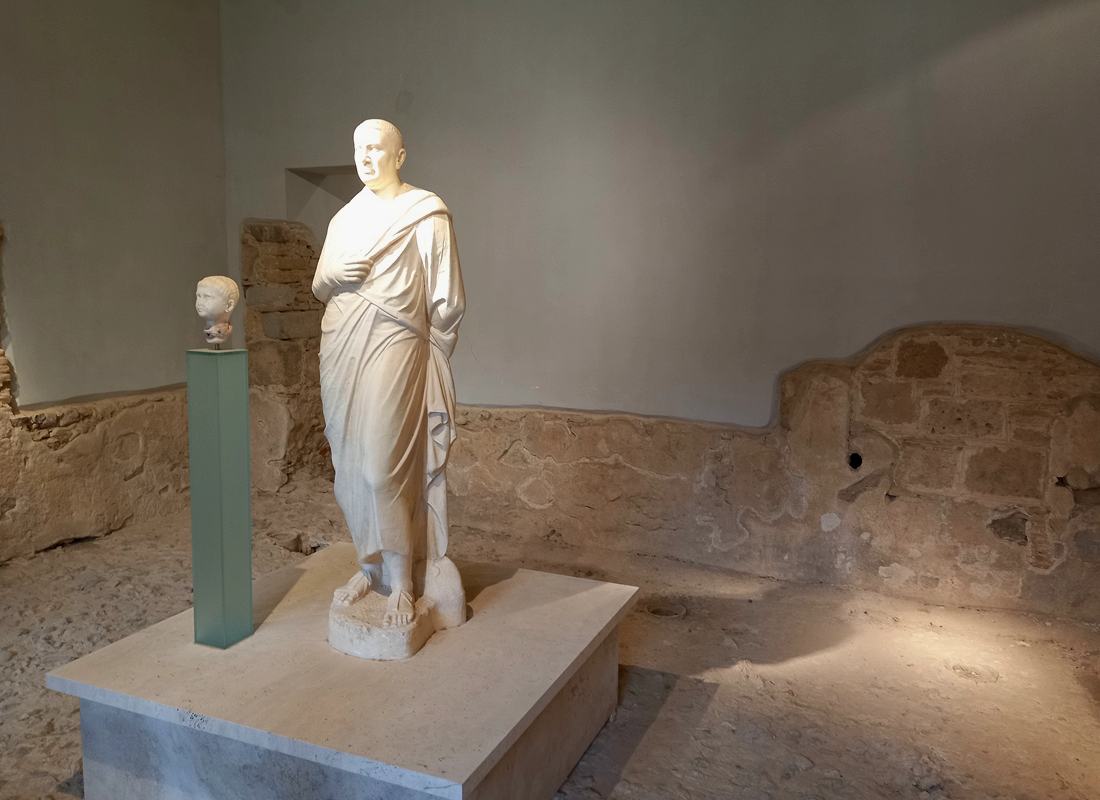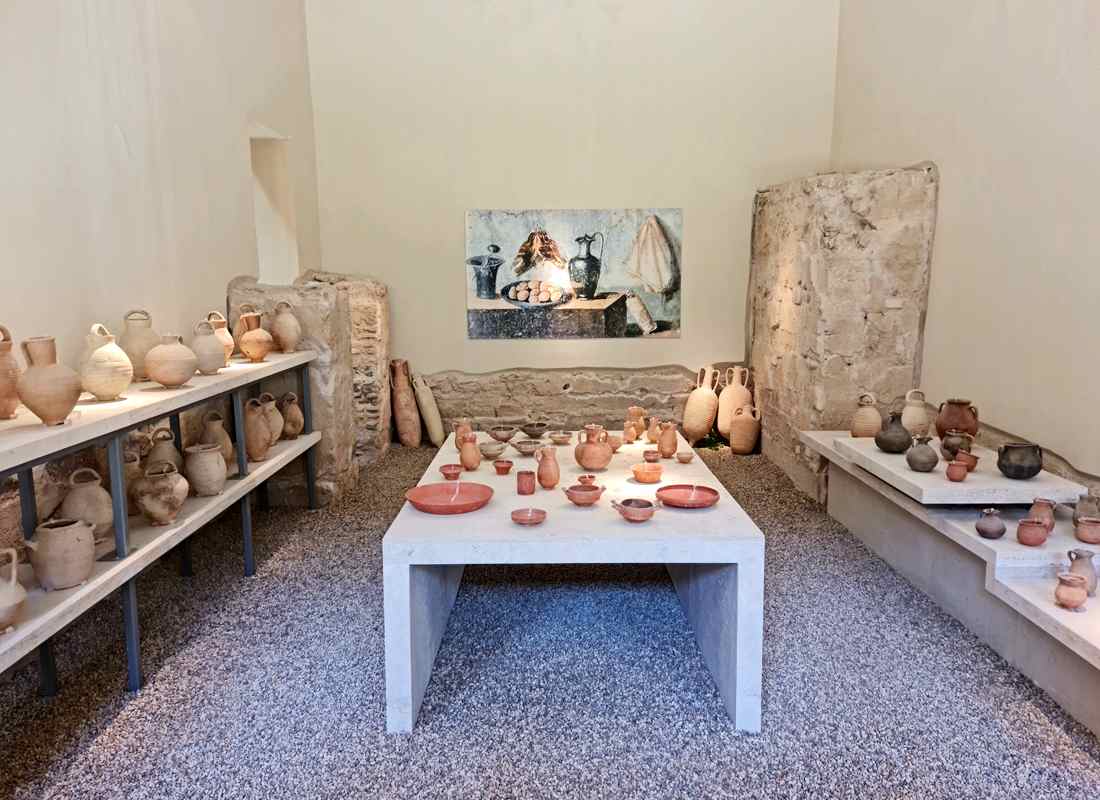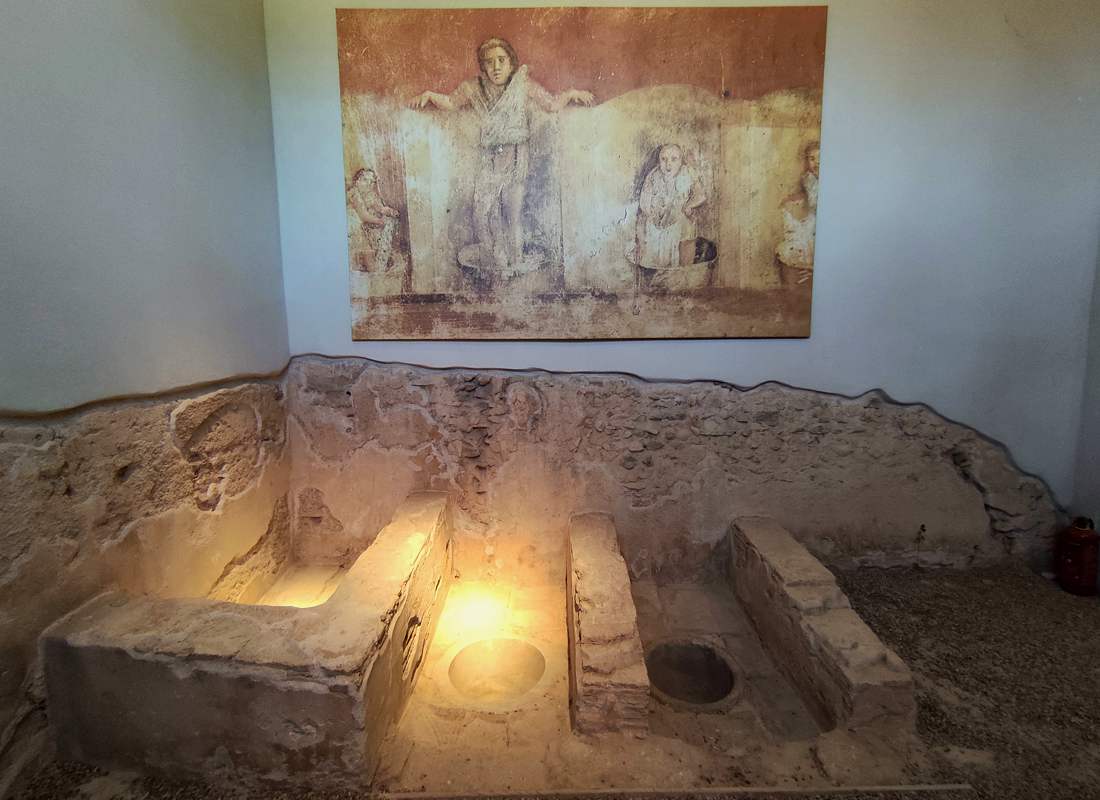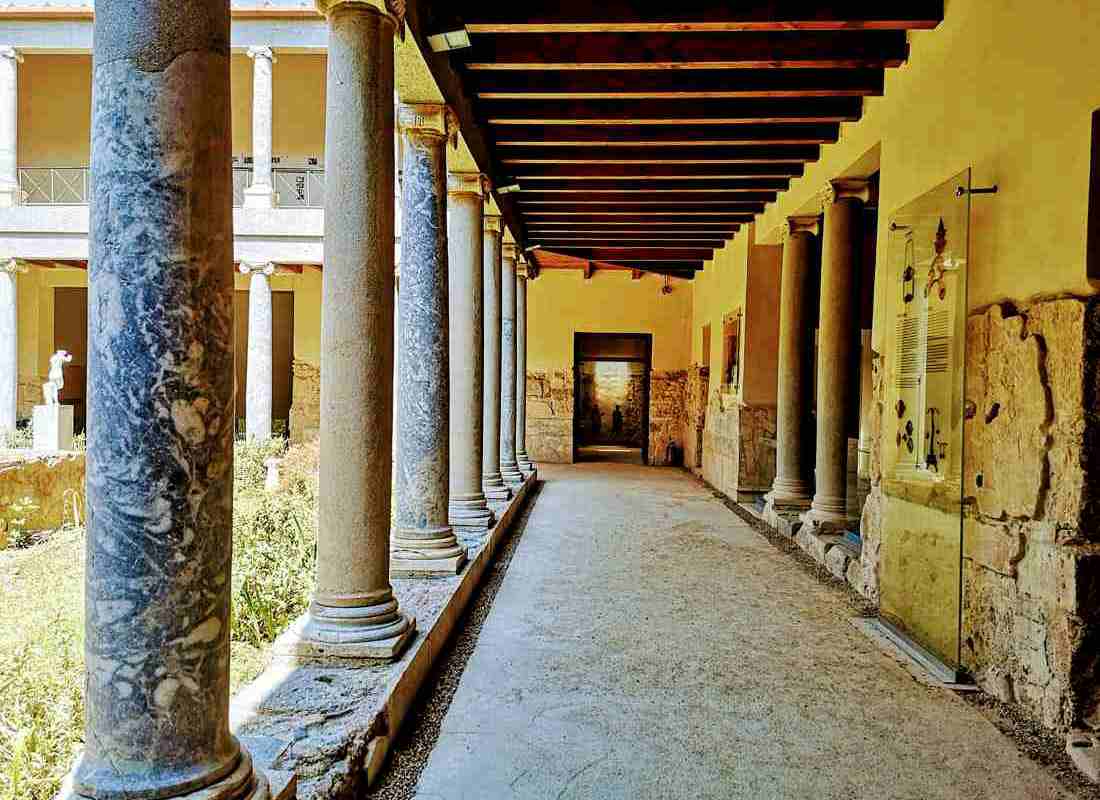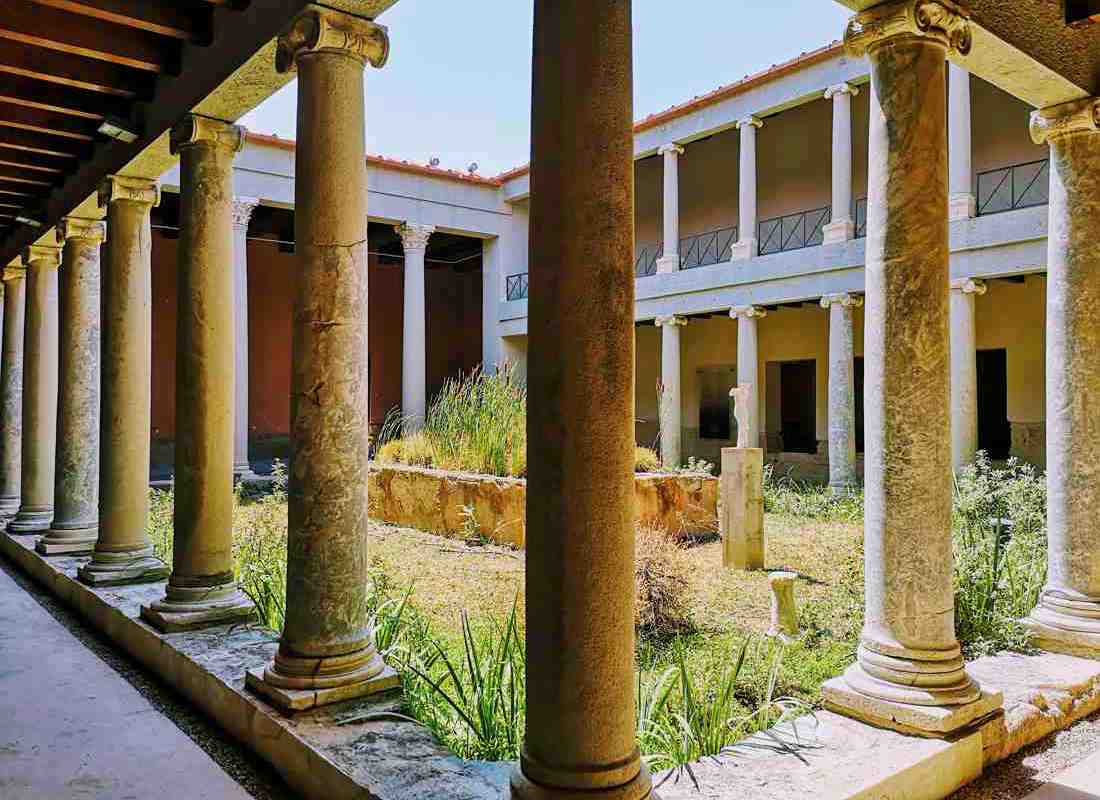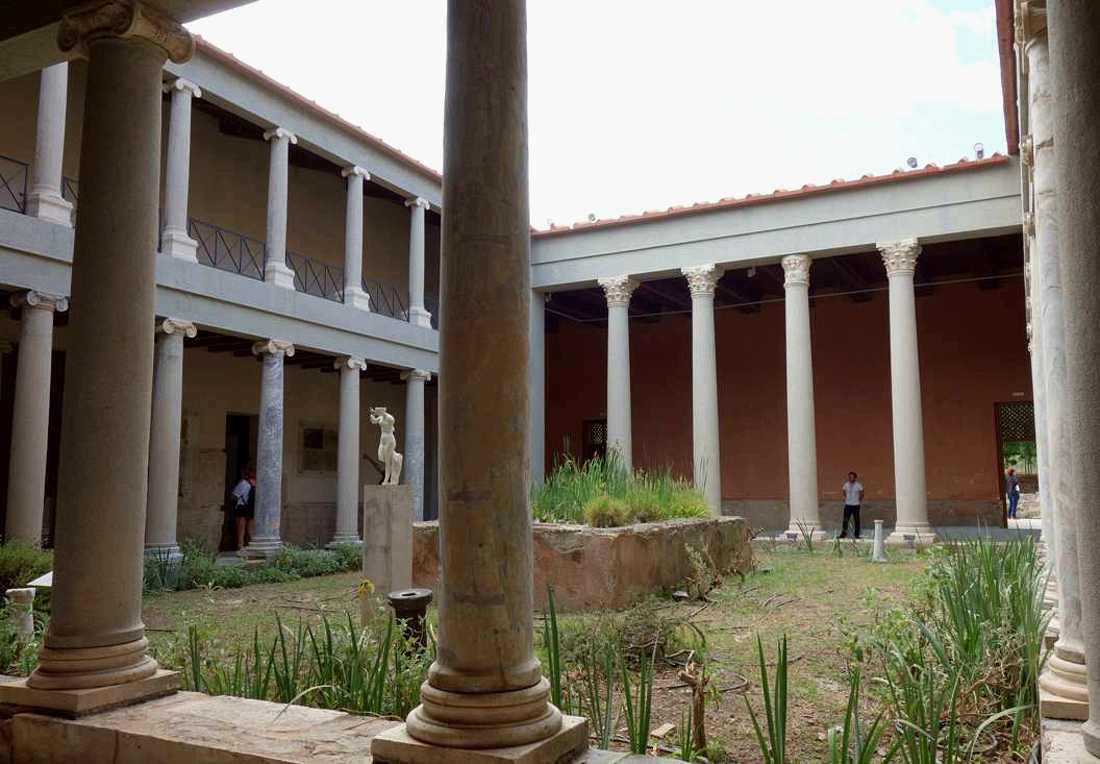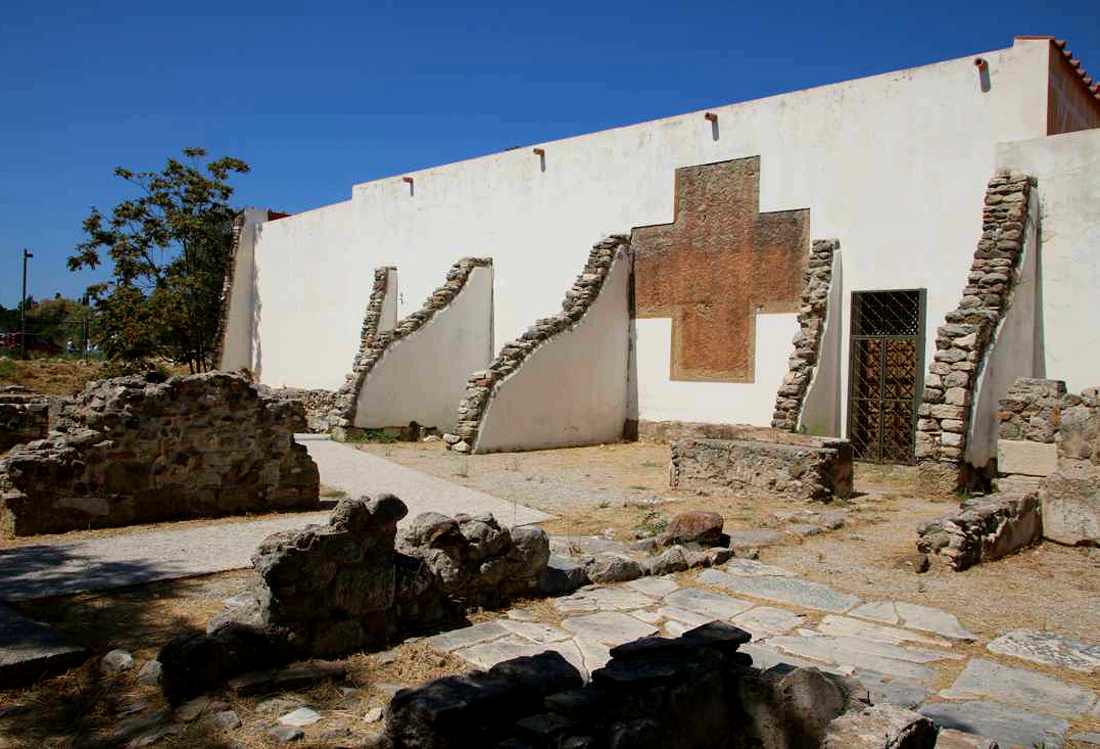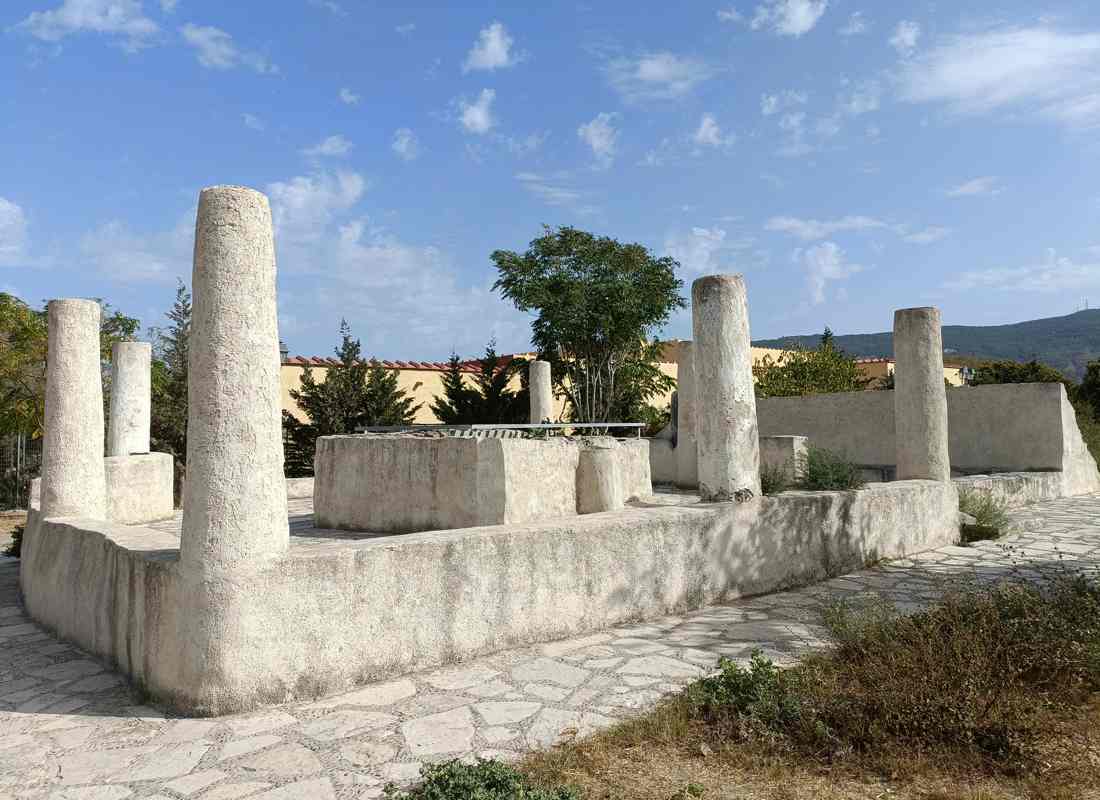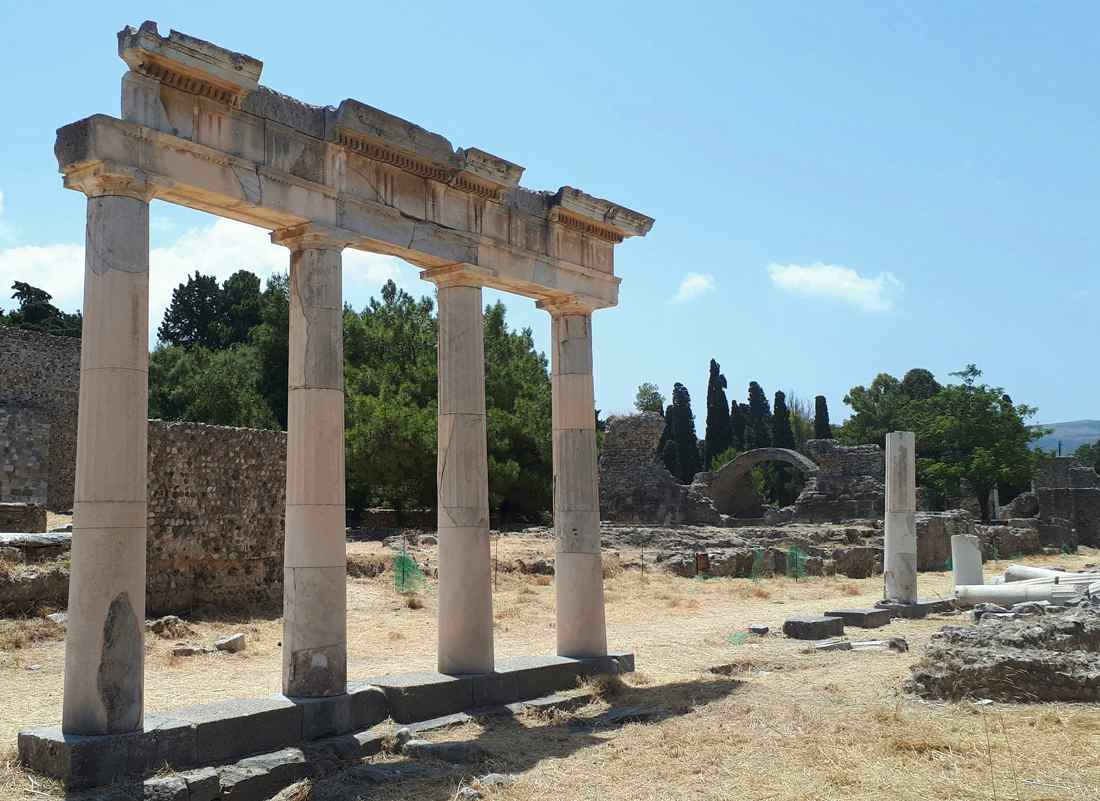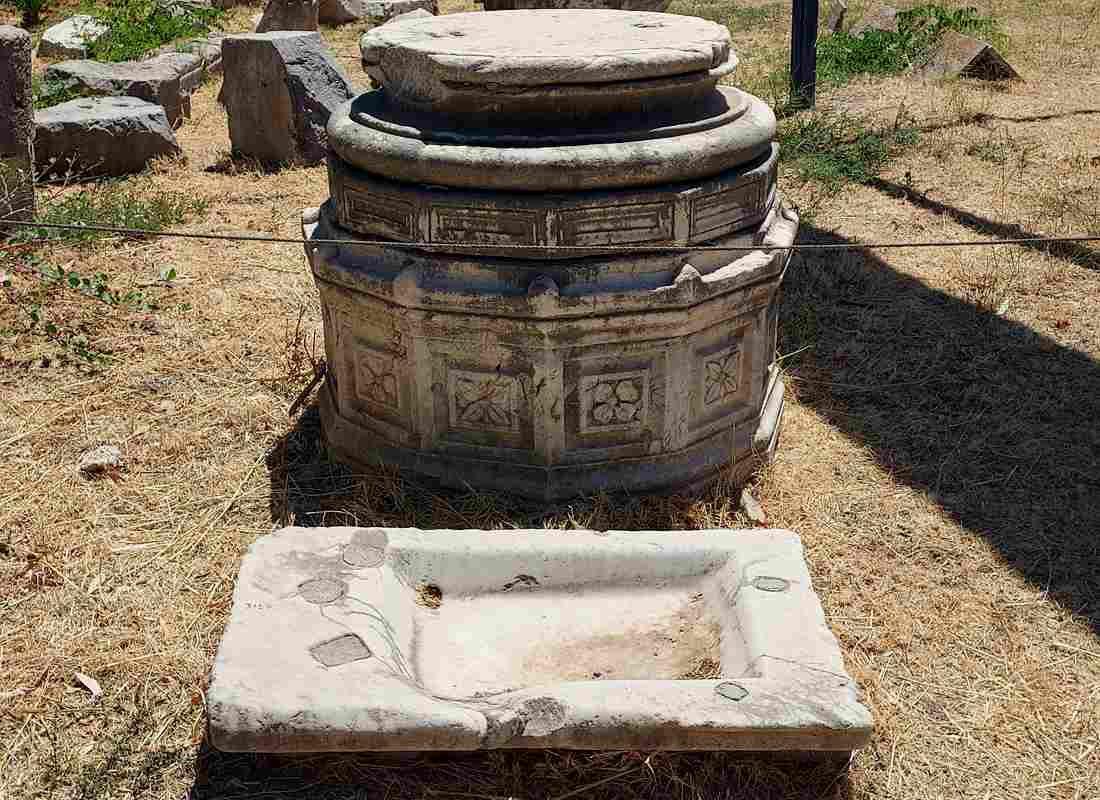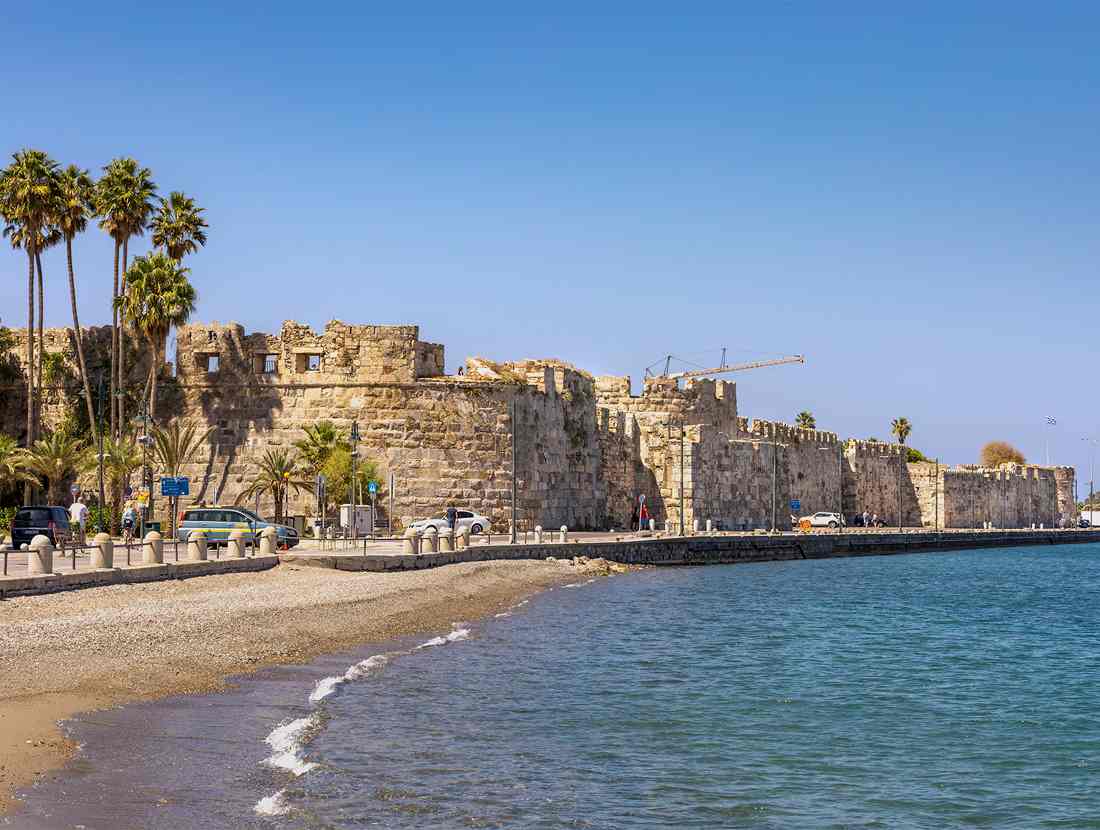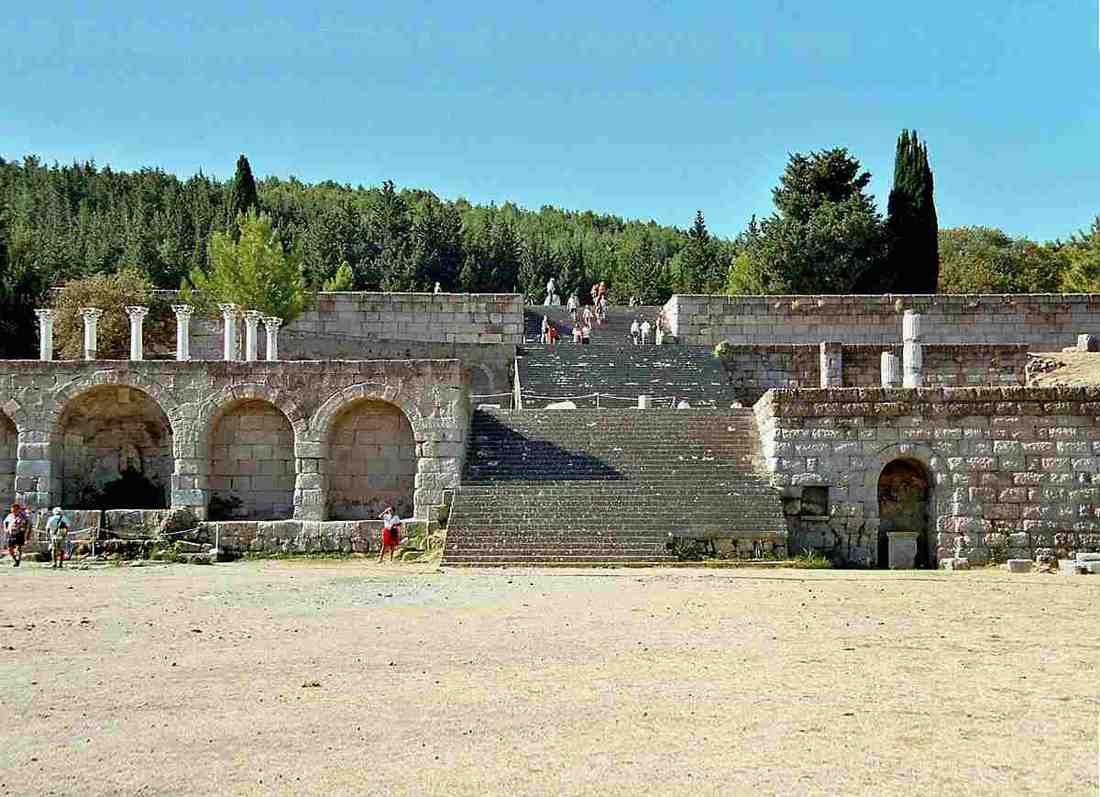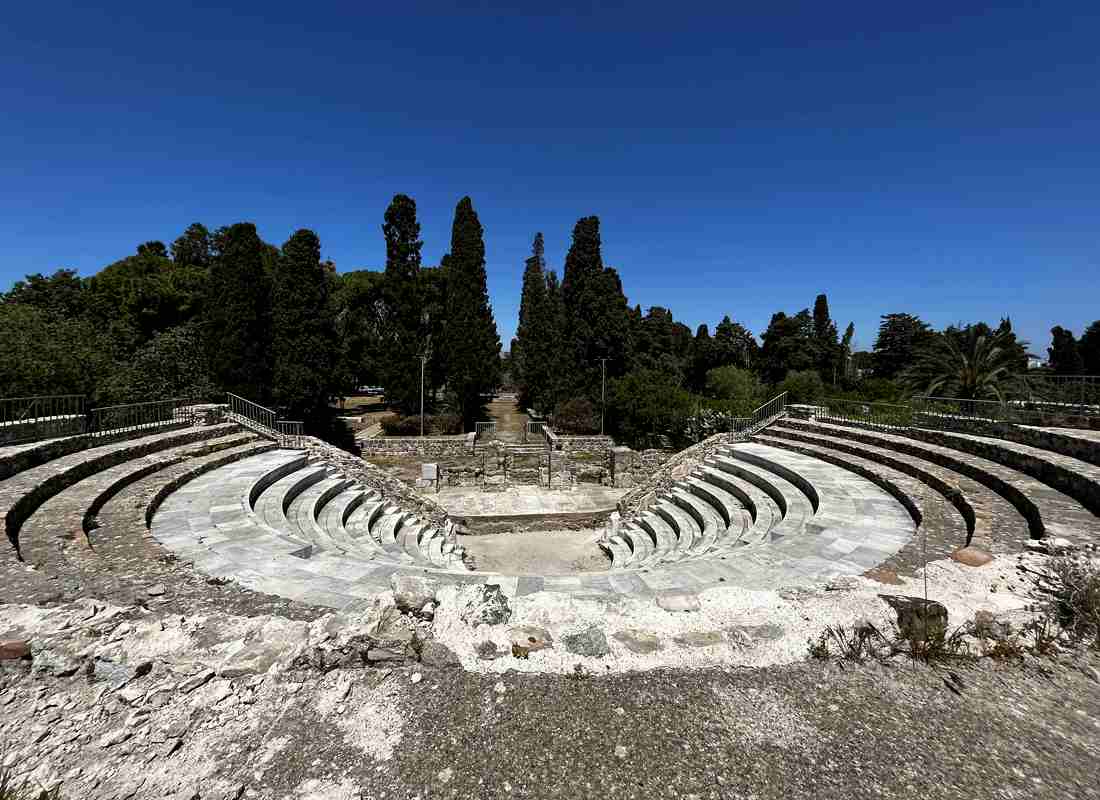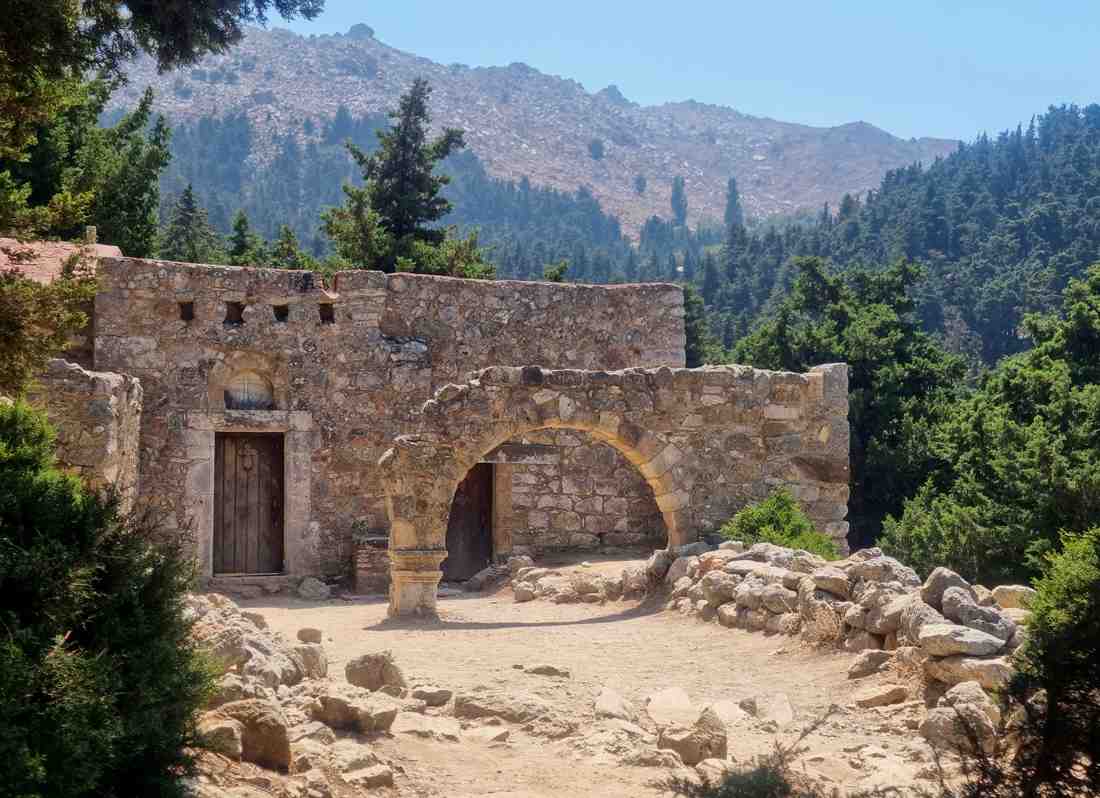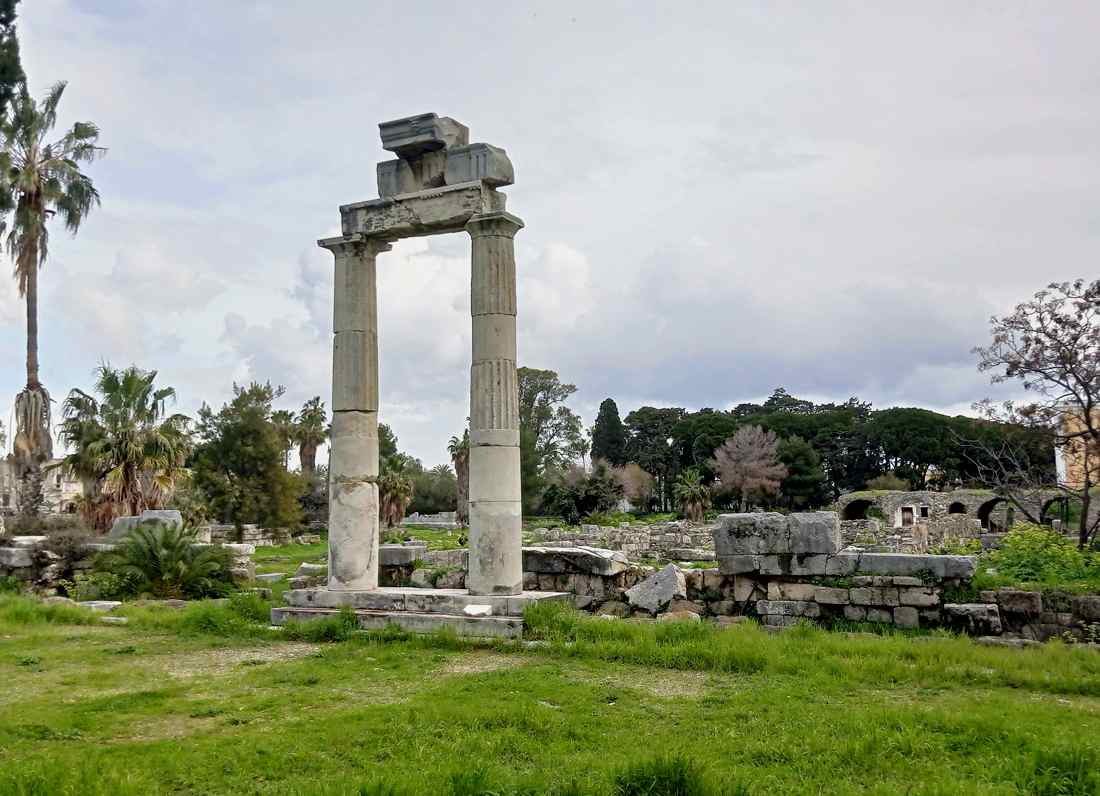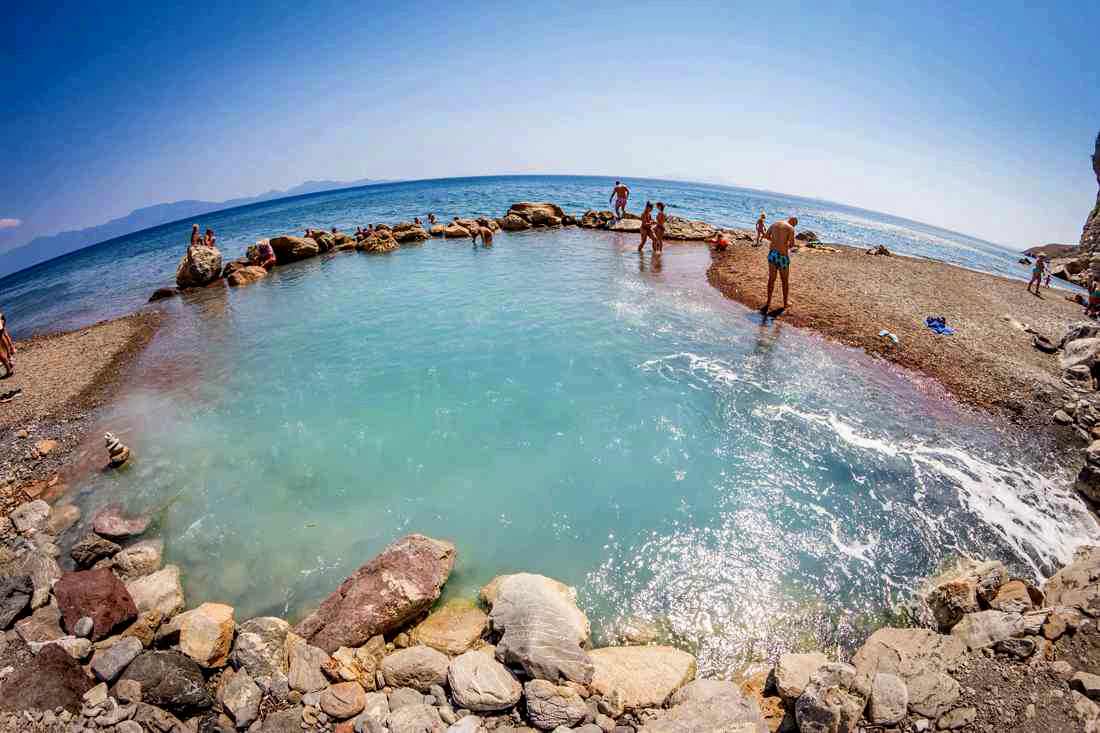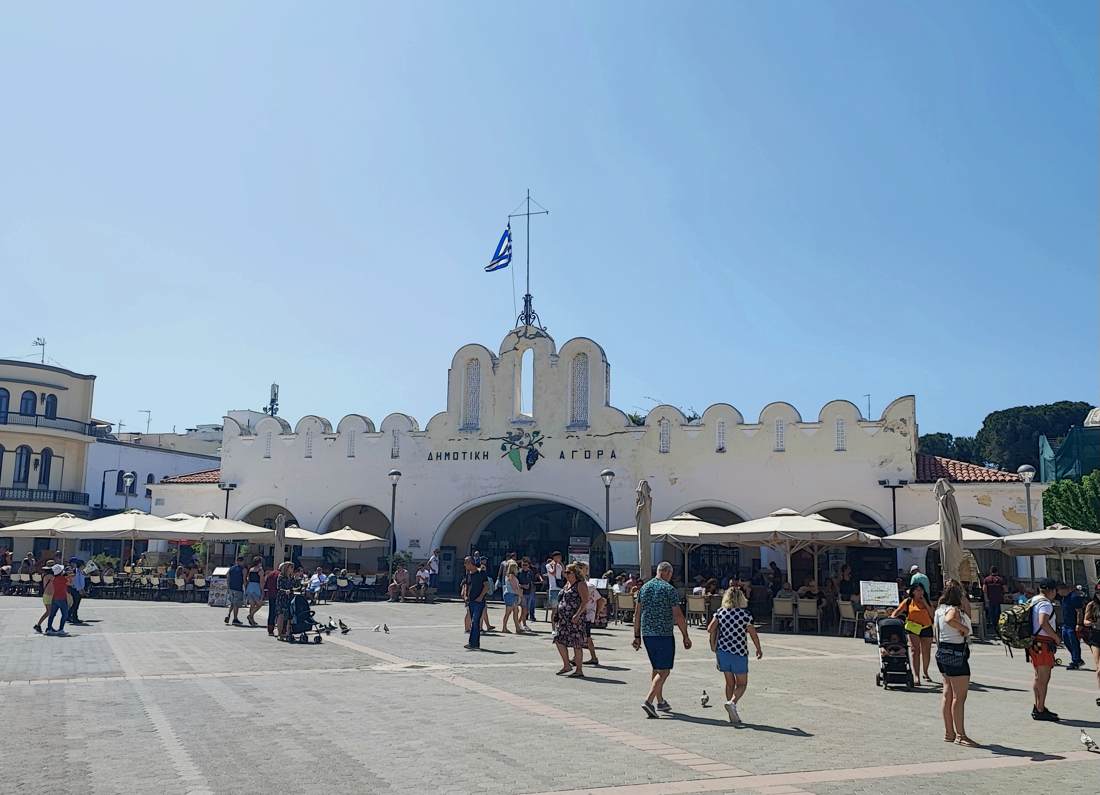
Casa Romana - Roman Villa
One of the most impressive sites of the ancient city, is the Roman villa Casa Romana. Its ruins were found after a strong earthquake in 1933 by Italian archaeologists. Restoration began immediately after its discovery and was not completed until 60 years later. The villa demonstrates the architectural style that dominated the island in Hellenistic and Roman times. The villa is reminiscent in style of Pompeii's buildings and dates from the 2nd century AD, it was built on the ruins of another building from the Hellenistic period. The rich decorations indicate that it belonged to a Roman aristocratic family that lived here around the beginning of the 3rd century. Above the central entrance rises a pedestal on which can be seen the inscription Apelixikakos (he who drives away evil). The building has 36 rooms and almost all the rooms have fragments of mosaic and marble decorations. All the rooms have mosaic floors that create the illusion of the sea floor. The villa is divided into 3 groups of atriums, which were meant to provide light and air to the surrounding rooms. There is a small fountain in the middle of each of these atriums. In the first atrium, a small statue of Asclepias was placed in the corridor. The second atrium has a floor decorated with dolphins and a mermaid riding a seahorse. In addition, its walls are lined with marble. The third atrium is the largest of all and its floors are covered with mosaics depicting a panther devouring a deer, while the walls are decorated with paintings.
Guest reviews
You may also be interested in similar information
Neratija Castle
Kos, Greece
Asklepion of Kos Island
Kos, Greece
Plaka - Peacock forest
Kos, Greece
Roman Odeon of Kos
Kos, Greece
Fortress of Paleo Pyli
Kos, Greece
Ancient agora of Kos
Kos, Greece
Spa beach Terma
Kos, Greece
Municipal market of Kos
Kos, Greece


